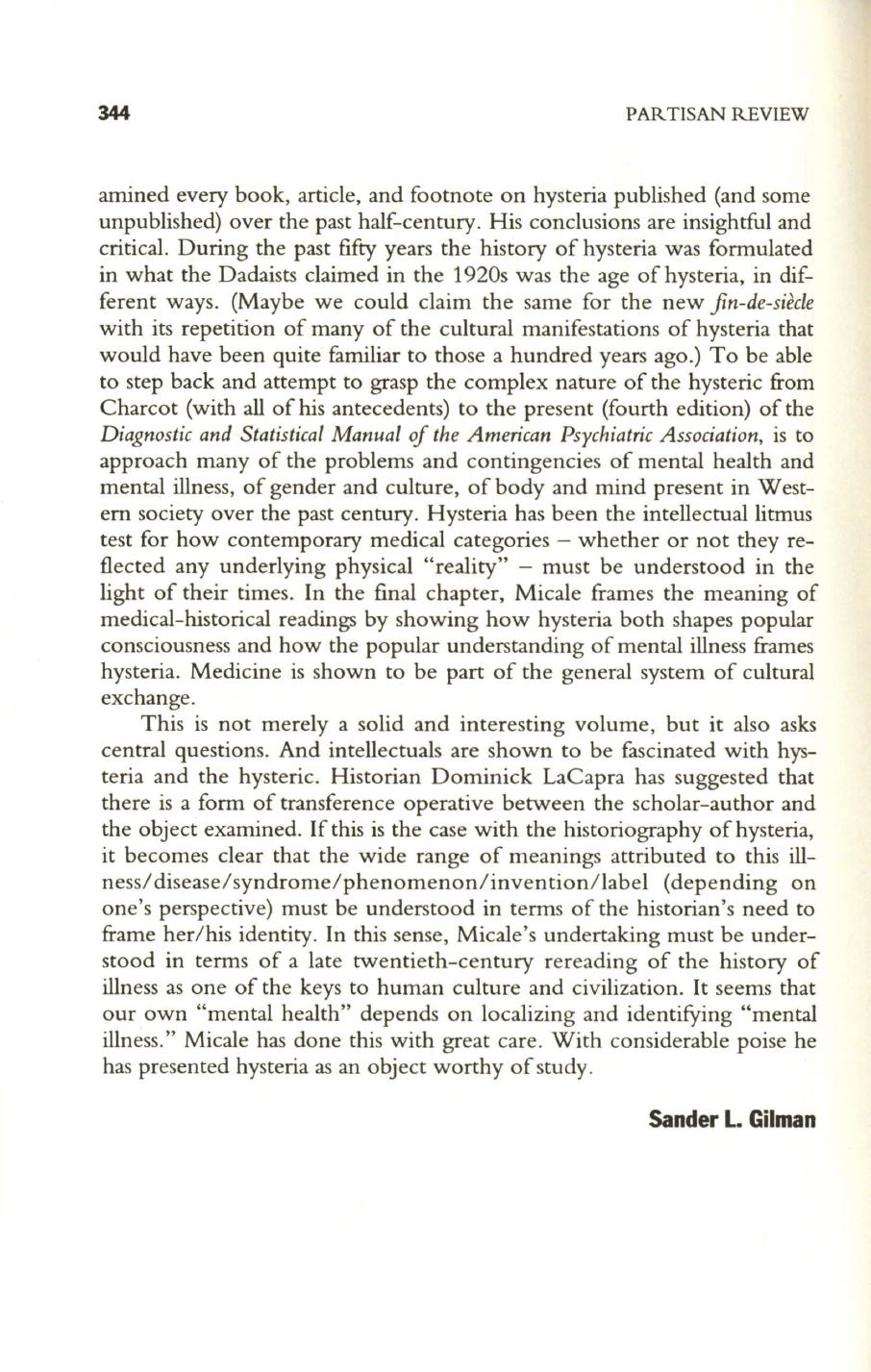
344
PARTISAN REVIEW
amined every book, article, and footnote on hysteria published (and some
unpublished) over the past half-century. His conclusions are insightful and
critical. During the past fifty years the history of hysteria was formulated
in what the Dadaists claimed in the 1920s was the age of hysteria, in dif–
ferent ways. (Maybe we could claim the same for the new
fin-de-siecle
with its repetition of many of the cultural manifestations of hysteria that
would have been quite familiar to those a hundred years ago.) To be able
to step back and attempt to grasp the complex nature of the hysteric from
Charcot (with all of his antecedents) to the present (fourth edition) of the
Diagnostic and Statistical Manual of the American Psychiatric Association,
is to
approach many of the problems and contingencies of mental health and
mental illness, of gender and culture, of body and mind present in West–
ern society over the past century. Hysteria has been the intellectual litmus
test for how contemporary medical categories - whether or not they re–
flected any underlying physical "reality" - must be understood in the
light of their times.
In
the final chapter, Micale frames the meaning of
medical-historical readings by showing how hysteria both shapes popular
consciousness and how the popular understanding of mental illness frames
hysteria. Medicine is shown to be part of the general system of cultural
exchange.
This is not merely a solid and interesting volume, but it also asks
central questions. And intellectuals are shown to be fascinated with hys–
teria and the hysteric. Historian Dominick LaCapra has suggested that
there is a form of transference operative between the scholar-author and
the object examined.
If
this is the case with the historiography of hysteria,
it becomes clear that the wide range of meanings attributed to this ill–
ness/ disease/syndrome/phenomenon/invention/label (depending on
one's perspective) must be understood in terms of the historian's need to
frame her/his identity.
In
this sense, Micale's undertaking must be under–
stood in terms of a late twentieth-century rereading of the history of
illness as one of the keys to human culture and civilization.
It
seems that
our own "mental health" depends on localizing and identifying "mental
illness." Micale has done this with great care. With considerable poise he
has presented hysteria as an object worthy of study.
Sander
L.
Gilman


